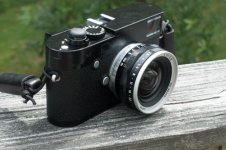Ed Schwartzreic
Well-known
This is all very interesting. Regarding filter stacks, it was Tom Abrahamsson who very strongly suggested to me a dozen or more years ago that I should generally forego putting any filter on a Leica lens, o/w I would degrade the performance. I traveled with Tom for many years and never saw him use a filter. This was of course for b/w film. Tom had not really accepted digital, and he died just before the release of the M10. I truly think he might have changed his mind with that camera, or especially the M10 monochrome. It was Tom who pushed for the original monochrome Leica, although I did not think her ever tried one himself.
I rarely use filters.
Ed
I rarely use filters.
Ed





